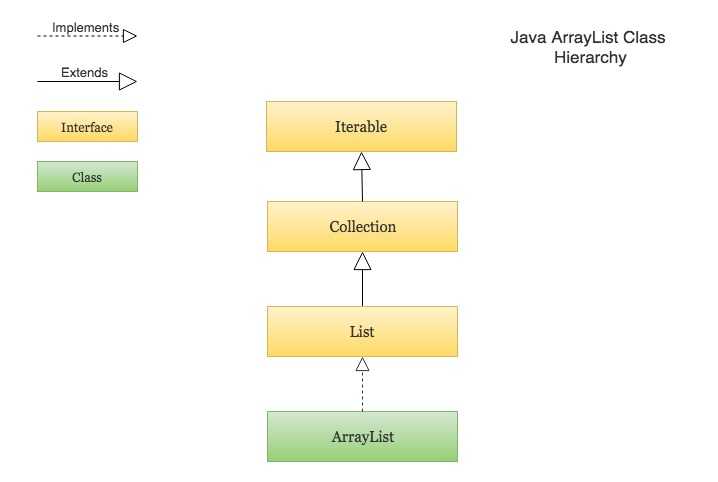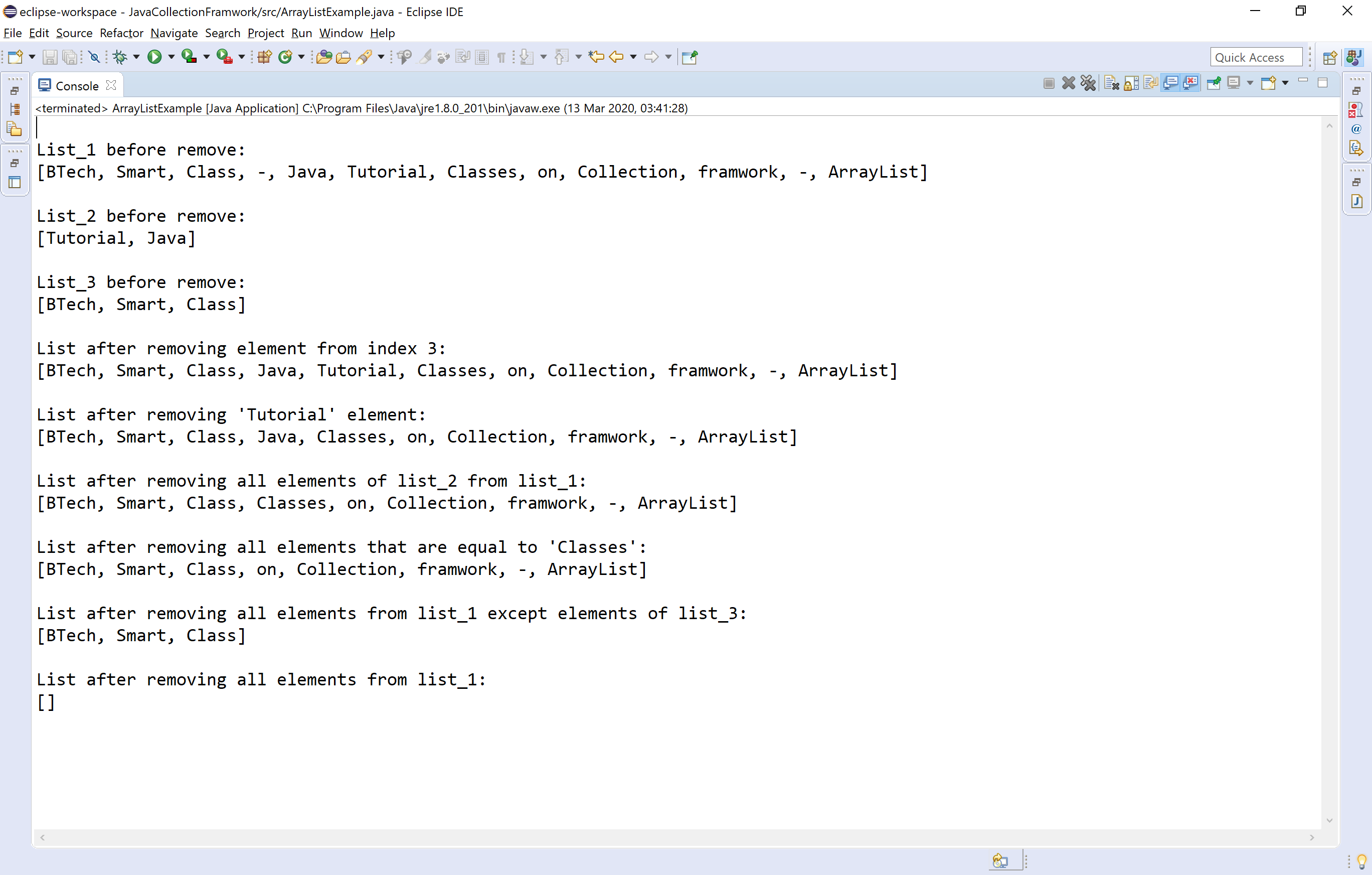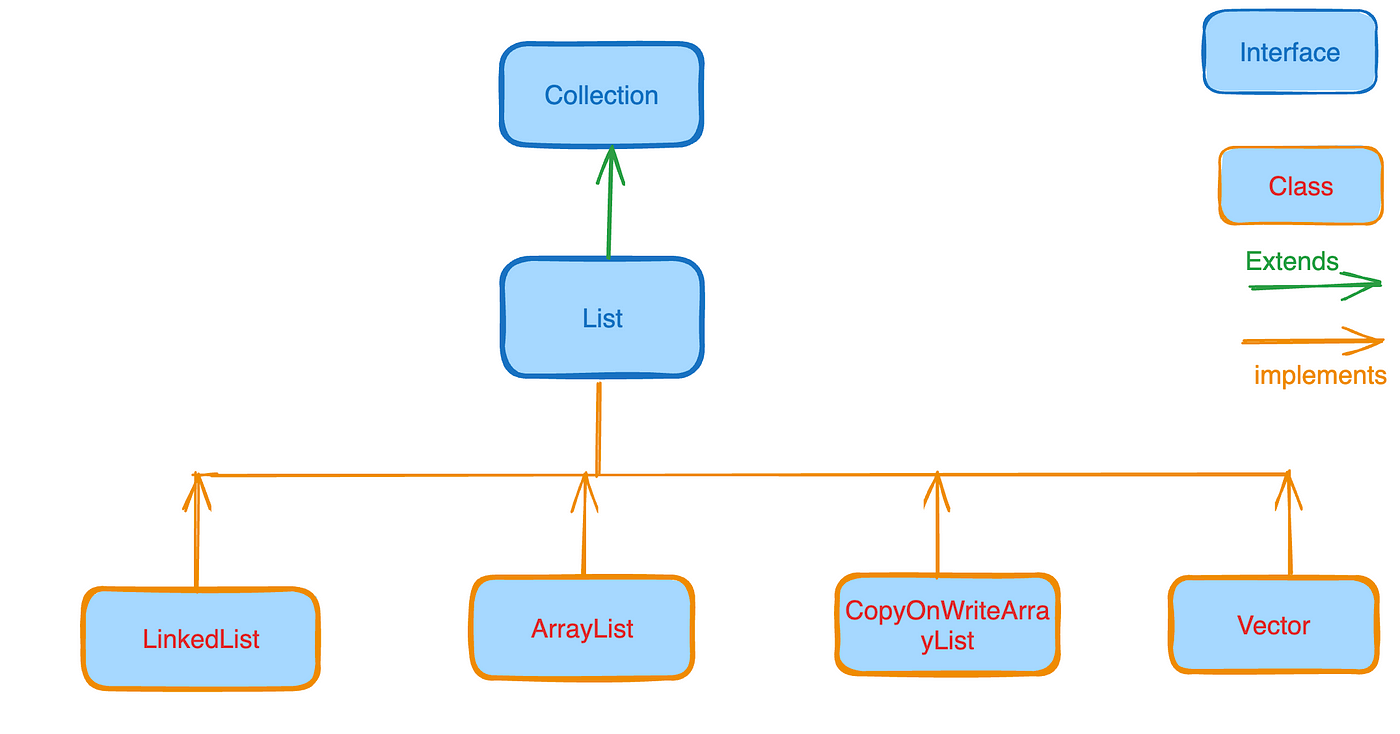Antwort Why ArrayList implements list in Java? Weitere Antworten – Why we use list ArrayList in Java
The List is an interface, and the ArrayList is a class of Java Collection framework. The List creates a static array, and the ArrayList creates a dynamic array for storing the objects. So the List can not be expanded once it is created but using the ArrayList, we can expand the array when needed.List in Java provides the facility to maintain the ordered collection. It contains the index-based methods to insert, update, delete and search the elements. It can have the duplicate elements also. We can also store the null elements in the list.ArrayList inherits AbstractList class and implements the List interface. ArrayList is initialized by size. However, the size is increased automatically if the collection grows or shrinks if the objects are removed from the collection. Java ArrayList allows us to randomly access the list.
What are the benefits of ArrayList over list : Benefits of ArrayList
- The fact that ArrayList is dynamic in size is one of its main advantages.
- ArrayList has various predefined methods which help to manipulate the stored objects.
- In ArrayList, we can randomly insert and delete elements.
- We can add different types of objects into the ArrayList.
Why list is faster than ArrayList
Array cloning is much faster than ArrayList because array creation is a simpler operation that involves allocating a contiguous block of memory. In contrast, ArrayList creation involves additional overhead, such as initializing internal data structures and dynamically resizing the list as elements are added.
Why use ArrayList instead of array : While Java arrays are fixed in size (the size cannot be modified), an ArrayList allows flexibility by being able to both add and remove elements.
Lists can easily grow in size, and you can add and remove elements in the middle of the list easily. That cannot be done with arrays. You need to consider what you need the list for though. If you don't think the list is going to change a lot, then use an array instead.
By declaring the listStrings variable to be of type List instead of ArrayList, your code is saying that it is more concerned with the contract of behavior as defined by the List interface rather than the implementation of that behavior as provided by the ArrayList class.
Why do we use List interface
The List interface provides a special iterator, called a ListIterator, that allows element insertion and replacement, and bidirectional access in addition to the normal operations that the Iterator interface provides. A method is provided to obtain a list iterator that starts at a specified position in the list.It implements the List interface to use all the methods of List Interface. It takes place in java. util package. The ArrayList class inherits the AbstractList class and implements the List Interface.The array has a quicker item retrieval time of (163.559 ns/op). In comparison, the ArrayList's item retrieval time is longer at (261.106 ns/op) due to additional checks performed on the backing array.
Arrays: Generally faster for basic operations like accessing and updating elements, due to their fixed size and direct memory allocation. ArrayLists: Slightly slower, especially when resizing is involved, due to the overhead of checking size, possible resizing, and data copying.
Why do we prefer list over array : Linked lists can be more memory-efficient than arrays, especially when dealing with sparse data or when memory allocation is a concern. However, arrays have advantages when elements need to be accessed quickly by their index.
Why list is better than array : When it comes to flexibility, the list is perfect as it allows easy modification of data. When it comes to flexibility, the array is not suitable as it does not allow easy modification of data. It consumes a larger memory.
Why are lists better than arrays Java
Java arrays offer simplicity and high performance for fixed-size collections, while ArrayLists provide flexibility and a rich suite of features for dynamic collections. Understanding their differences is key to optimizing data management in Java applications.
A List in Python is faster than an array because arrays are based on a Python list itself when we create the list an array of pointers storing the references of elements in the list is created somewhere in the memory location.Some of the important points about Java List are;
- Java List interface is a member of the Java Collections Framework.
- List allows you to add duplicate elements.
- List allows you to have 'null' elements.
- List interface got many default methods in Java 8, for example replaceAll, sort and spliterator.
What is the difference between ArrayList and list in Java : The List refers to a collection of various elements in a sequence, in which every element is basically an object. Also, we can access these elements by their positions (index). On the other hand, an ArrayList creates an array (dynamic) of the objects that can easily reduce or increase in size as and when required.





